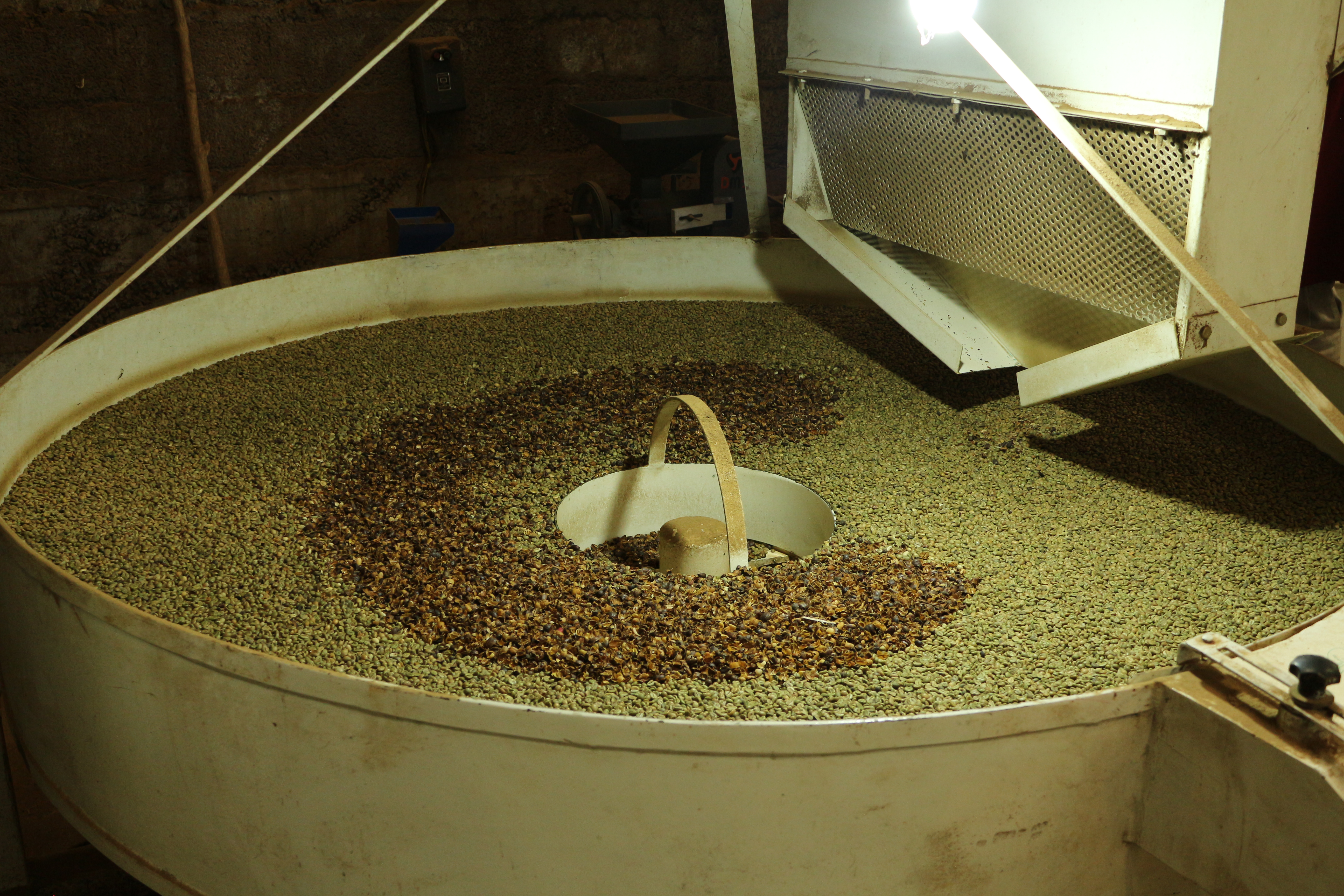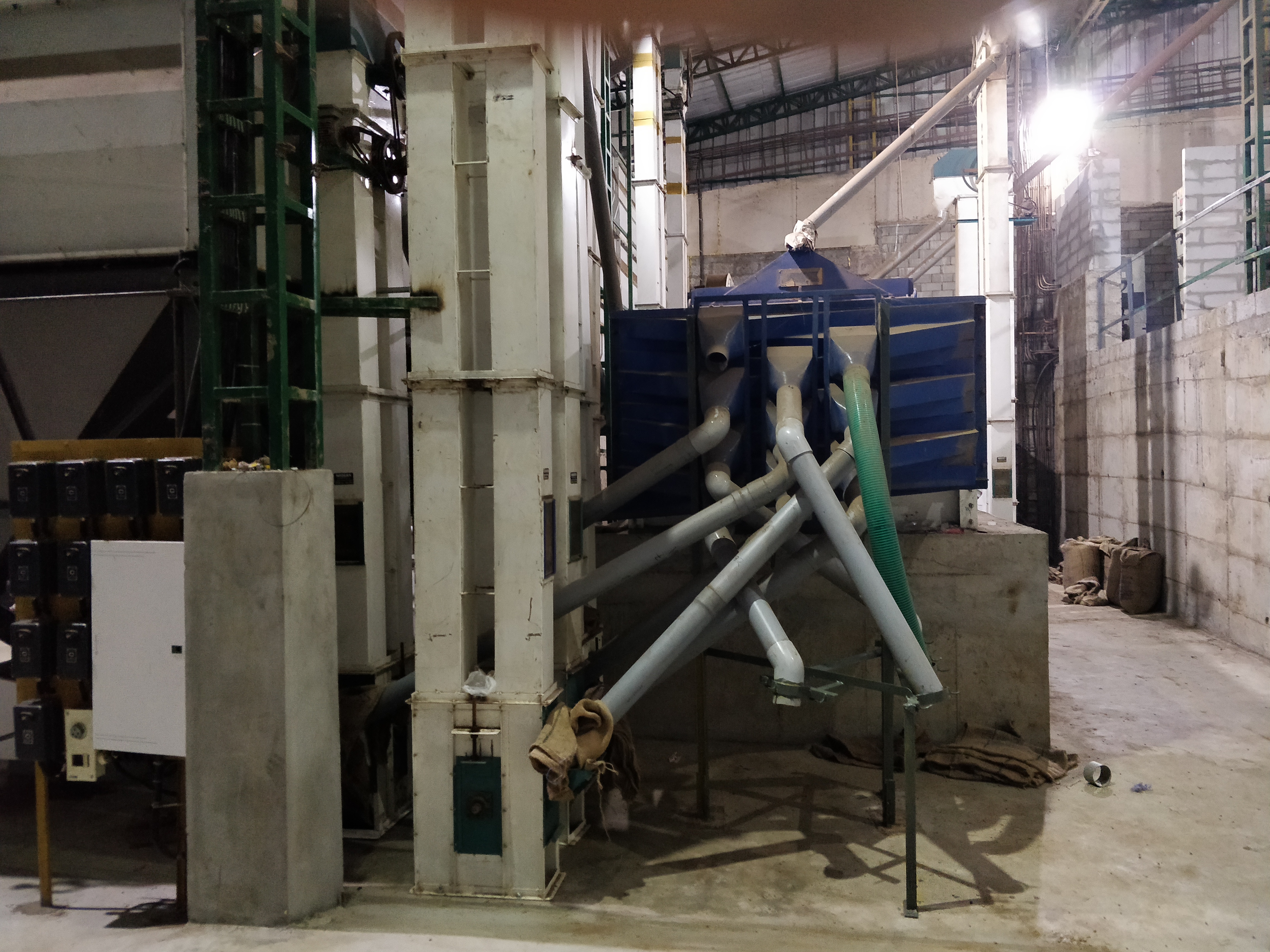
A sophisticated factory capable of processing raw coffee and transforming it into green coffee used to roast coffee at a coffee roastery.


Each method of coffee processing contributes significant flavor differences that reflect in the final cup. The success of coffee processing is integral to having a quality roast. Even if perfectly grown and harvested, a poorly processed bean can destroy the quality of the final roast.
Honey Sun Dried (Pulped Natural) is a distinctive coffee processing method known for its unique flavor profile. In this process, ripe coffee cherries are carefully pulped to remove the outer skin, leaving the mucilage - a sticky, sugary layer - intact. The beans are then spread out in the sun to dry. Unlike fully washed beans, which are fermented to remove all mucilage, honey-processed beans retain a portion of this sweet, fruity layer.
Parchment in the context of coffee refers to a critical stage in the processing of coffee beans after they are harvested. After the cherries are picked, they go through a series of steps to extract the green coffee beans from the fruit.
FermentedThis process typically takes place in a controlled environment, often in tanks or containers where the cherries are allowed to ferment. The duration of fermentation varies depending on factors such as climate, altitude, and desired flavor profile. After fermentation, the cherries are thoroughly washed, removing any remaining pulp, before the beans are dried.
Green coffee refers to unroasted coffee beans that have been harvested, processed, and dried but have not yet undergone the roasting process. Unlike the familiar brown coffee beans used for brewing, green coffee beans are small, hard, and have a greenish color.
Wet processing is a meticulous and widely used method in coffee production. It involves several precise steps to transform freshly harvested coffee cherries into green coffee beans, ready for roasting. Initially, the cherries are sorted to remove any debris or underripe fruits. They are then pulped, a process where the outer skin of the cherry is mechanically removed, leaving behind the mucilage-covered beans.
Wet processing parchment is a pivotal stage in the journey of coffee beans from harvest to roasting. This process begins immediately after coffee cherries are picked from the trees. The cherries are first sorted and cleaned to remove any debris. Next, they undergo pulping, which involves removing the outer skin to reveal the mucilage-covered beans inside. These beans are then soaked in water, initiating a fermentation process. During this phase, enzymes naturally break down the remaining mucilage.
Wet processing green coffee is a crucial phase in the journey of coffee beans from harvest to the roasting process. This method begins immediately after coffee cherries are picked. The cherries are first sorted and cleaned to remove any impurities. Following this, they undergo pulping, which involves mechanically removing the outer skin to reveal the mucilage-covered beans inside. These beans are then submerged in water, initiating a fermentation process. During this phase, enzymes naturally break down the remaining mucilage.
Natural Sun-DriedNatural sun drying is a traditional and time-honored method of processing coffee cherries. In this approach, freshly harvested cherries are spread out in thin layers under direct sunlight to dry naturally. This process allows the cherries to slowly lose their moisture content over a span of several weeks.
Natural sun-dried coffee with husk is a distinctive method of coffee processing that involves leaving the protective outer layer of the coffee cherries intact during the initial stages of drying. This method combines elements of both natural sun drying and retaining the husk, resulting in a unique and flavorful coffee.
Natural sun-dried green coffee is a unique and cherished method of processing coffee beans, known for producing distinct flavor profiles. This method involves exposing freshly harvested coffee cherries, with their protective outer layers intact, to direct sunlight for a prolonged period. The process begins with the careful selection and cleaning of the cherries to remove any impurities.
Monsoon CoffeeThe beans used for Monsoon coffee are typically Arabica, though some Robusta varieties are also used. After harvesting, the green coffee beans are spread out in open-sided warehouses during the monsoon season, which lasts from June to September in the region. During this time, the beans are exposed to the moisture-laden winds and heavy rains characteristic of the monsoon.


A factory dry mill is a crucial facility in the coffee processing chain, responsible for preparing green coffee beans for export or distribution. It's a specialized processing unit equipped with a range of sophisticated machinery designed to efficiently handle large quantities of coffee. The process begins with the intake of green coffee beans, which may have undergone various processing methods such as washing, drying, or fermentation. The beans are first cleaned to remove any remaining debris or foreign matter. They then go through a series of steps, which may include hulling, grading, density sorting, destoning, and color sorting.